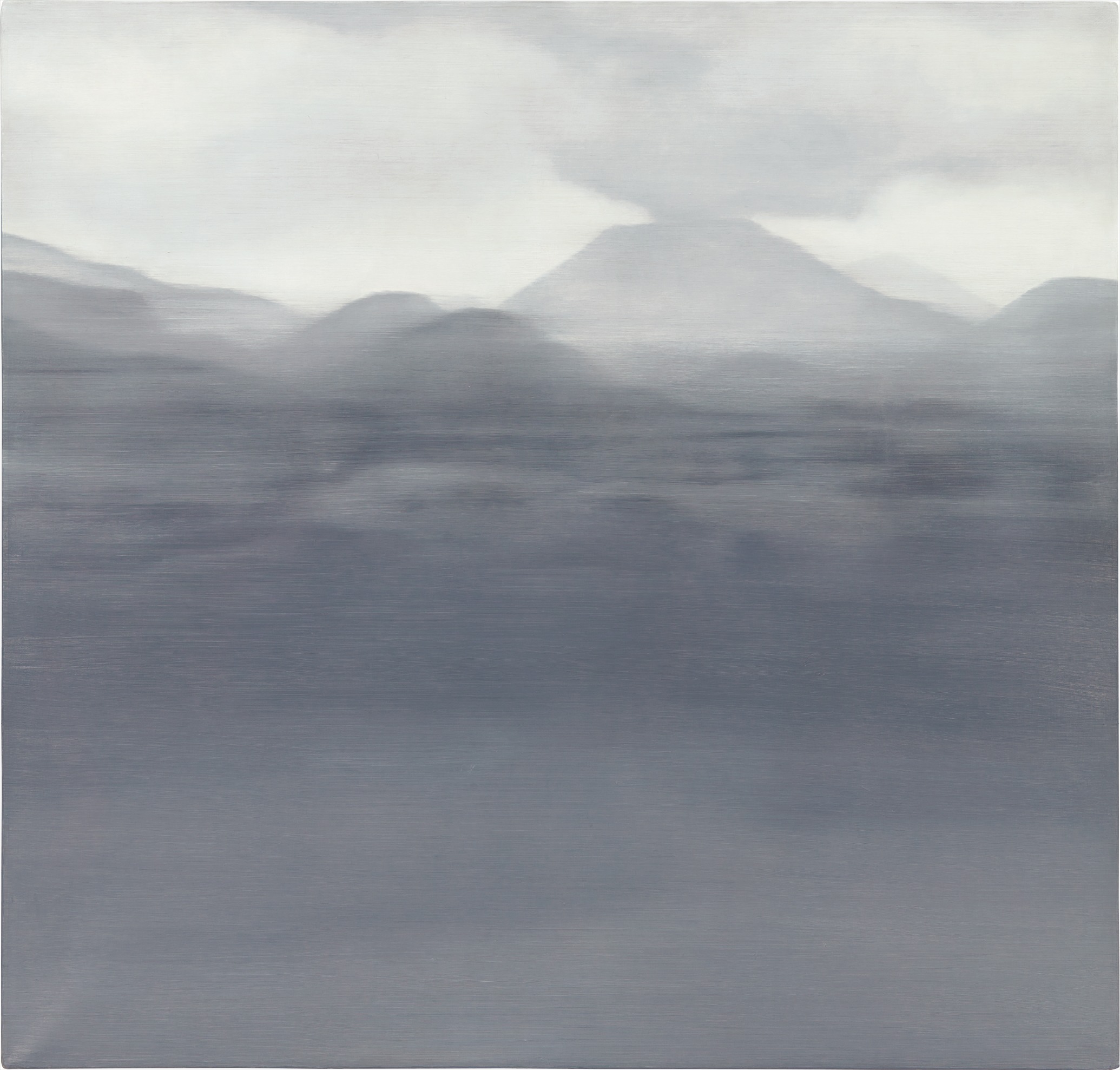

12
Gerhard Richter
Italienische Landschaft (Italian Landscape)
Full-Cataloguing
While relatively few landscape paintings exist in Richter’s oeuvre, no other motif has preoccupied the artist for such a sustained duration as that of landscape. Richter painted his first landscape paintings in 1963, just one year after he conceived his very first photo-paintings. Having moved to Düsseldorf from the German Democratic Republic in 1961, Richter, bombarded by the visual onslaught of the Western economic miracle, sought to critically examine the “truth claim” of photography by making paintings based on photographs that he sourced from newspapers, books, and family albums. However, Richter later came to reassess his earlier statements on the criteria for choosing certain photographs, explaining in 1986 how the criterion was, “content, definitely—though I may have denied this at one time” (Gerhard Richter, quoted in Benjamin H.D. Buchloh, “An Interview with Gerhard Richter”, 1986, October Files, no. 8, Cambridge, 2009, p. 13).
Italienische Landschaft belongs to the group of early photo-paintings of faraway places that art historian Dietmar Elger specifically highlighted as exemplary for the dichotomy they presented “between the objectifiable distance generated by black and white painting and the artist’s personal interest in the motifs” (Dietmar Elger, Gerhard Richter Landscapes, exh. cat., Sprengel Museum, Hannover, 1998, p. 19). As with Niagara Falls, 1964, or Sphinx von Gizeh, 1964, the present work portrays a landscape that Richter himself had never visited; he would tellingly only go on his first holiday abroad in 1968. Based on found photographs, these works collectively convey the middle-class desire for faraway holidays, and the implied economic independence.
With Italienische Landschaft, Richter subversively resuscitates the genre of landscape painting that was deemed outdated in the contemporary art context of the 1960s. While its sublime vista recalls those of Romantic painter Casper David Friedrich, Richter’s landscapes are diffused and void of human presence. As Richter explained, “landscapes…show my yearning…But though these pictures are motivated by the dream of classical Order and a pristine world – by nostalgia, in other words – the anachronism in them takes on a subversive and contemporary quality” (Gerhard Richter, “Notes 1981”, The Daily Practice of Painting, London, 1995, p. 98).
By subtly blurring the image, Richter deliberately aims to create a distance between the viewer and the landscape depicted. If the viewer is encouraged to lose him or herself in the painterly space of traditional landscape painting, in Italienische Landschaft one is, “left in a state of perpetual limbo bracketed by exigent pleasures and an understated but unshakable nihilism. Those who approach Richter’s landscapes with a yearning for the exotic or the pastoral are greeted by images that first intensify that desire and then deflect it” (Robert Storr, Gerhard Richter: Forty Years of Painting, exh. cat., Museum of Modern Art, New York, 2002, p. 67). Masterfully recreating a photograph whilst allowing the process of its painterly making to remain visible, Richter heightens the tension between painting and photography, abstraction and figuration, truth and fiction – presenting to us an image that is conceptually subversive as it is utterly magnificent.
Gerhard Richter
German | 1932Powerhouse painter Gerhard Richter has been a key player in defining the formal and ideological agenda for painting in contemporary art. His instantaneously recognizable canvases literally and figuratively blur the lines of representation and abstraction. Uninterested in classification, Richter skates between unorthodoxy and realism, much to the delight of institutions and the market alike.
Richter's color palette of potent hues is all substance and "no style," in the artist's own words. From career start in 1962, Richter developed both his photorealist and abstracted languages side-by-side, producing voraciously and evolving his artistic style in short intervals. Richter's illusory paintings find themselves on the walls of the world's most revered museums—for instance, London’s Tate Modern displays the Cage (1) – (6), 2006 paintings that were named after experimental composer John Cage and that inspired the balletic 'Rambert Event' hosted by Phillips Berkeley Square in 2016.